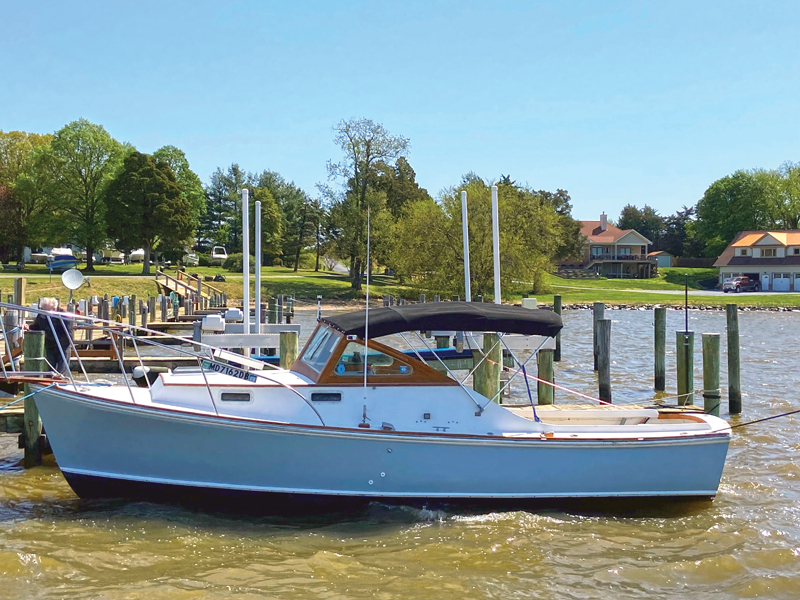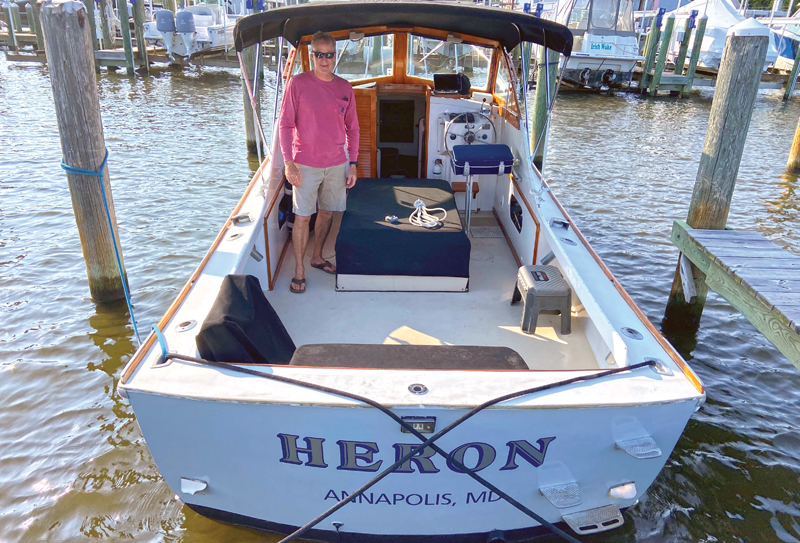You can own a powerboat and still identify as a sailor. Really.
It’s a flat calm Friday night, and the work day is over. The water calls, so we take the seven-minute drive over to our marina, hop aboard, and head over to Harness Creek to anchor for a happy hour or two. As the sun sets, we head back to the dock, tying up before twilight descends into darkness. An evening made possible only by the fact that we’ve acted on our blasphemous thoughts of adding a powerboat to our fleet.

We firmly continue to identify as sailors and continue to own our Sabre 402 Calypso and a half share in Mofongo, a Harbor 20. But even though we’d moved closer to the water during the pandemic, we found we weren’t getting out on the water as often as we thought the move might have enabled (not counting kayaking and paddleboarding). Work and family demands continue, and either the weather has gotten less windy overall, or as we’ve aged (or become wiser), we’ve become less tolerant of motoring in dead calm or watching our sails flog haplessly.

Dallying with the inconceivable
For nearly two years, we dallied with the inconceivable: buying a powerboat. We consoled ourselves with the knowledge that many of our sailing friends also own motorboats to supplement time on the water, and for many sailors, switching to power is something of an inevitability. Over those two years, we carefully outlined what we call “The Paradigm”—the requirements for our new vessel. Aside from meeting our budget, she would need to double our speed under power compared to the sailboats, have an enclosed head with standing room, have a roomy cockpit, and be large enough to allow us to sleep aboard for a night from time to time. Being pretty was non-negotiable. Above all, she needed to not be so attractive overall that we would prefer her over Calypso when we had the time and wind to sail. Were we asking too much?
As we zeroed in on potential acquisitions, whenever we looked at a boat, we couldn’t help but approach apologetically: “We’re sailors… but we want to add a boat we can use when there’s no wind.” The working name for our next boat was Unwind or Windless. The brokers didn’t care, but we felt it important to confirm (if only to ourselves) the priority of sailing.
Eventually, we found her this spring. A classic (antique?) 1984 Dyer 29 with a grey hull we named Heron. She mostly met The Paradigm (hey—it’s a boat—compromise is inevitable!). She came in only little over budget, and the enclosed head featured a LectraSan unit, which cannot be used in Anne Arundel County waters anymore (setting us on an odyssey of finding holding tank solutions, which my husband Rick ultimately worked out and installed himself)
Sailing days versus powerboat days
I’ve been carefully keeping a log of when we use Calypso and Heron and why we chose one over the other. So far, the sailboat has the edge. Of 28 days on the water through the Fourth of July, 10 of them were aboard Calypso versus eight for Heron. Of the powerboat days, the majority of them were on occasions when using the sailboat wouldn’t have made sense: a Friday night concert in Lake Ogleton, fireworks in Almshouse Creek, lunch in Galesville on a non-sailing day, and those happy hours in Harness Creek. So far, The Paradigm is being followed, and in the dog days of summer to come, I expect that will continue.
As a nod to the time I’ve spent in New Orleans, we’d considered yet another name—Lagniappe—for our boat, which is a Cajun-French expression for “a little something extra.” Ultimately deciding not to use this as a name, owing to its obscurity and the difficulty of its pronunciation, we’ve nevertheless found that Heron provides us with lagniappe.
by Eva Hill




